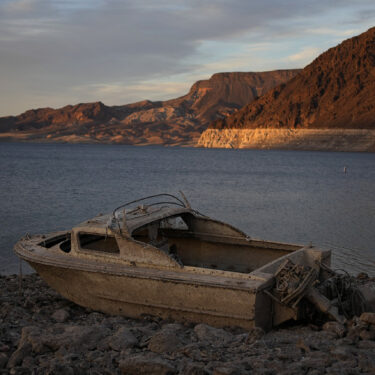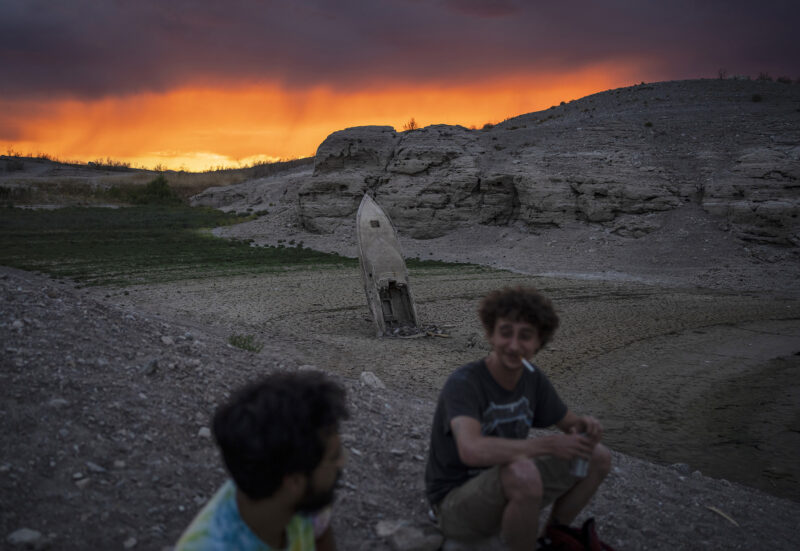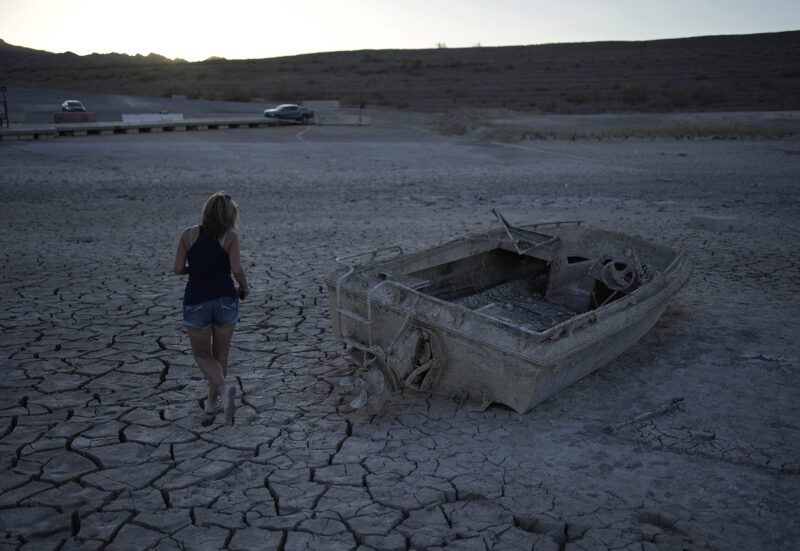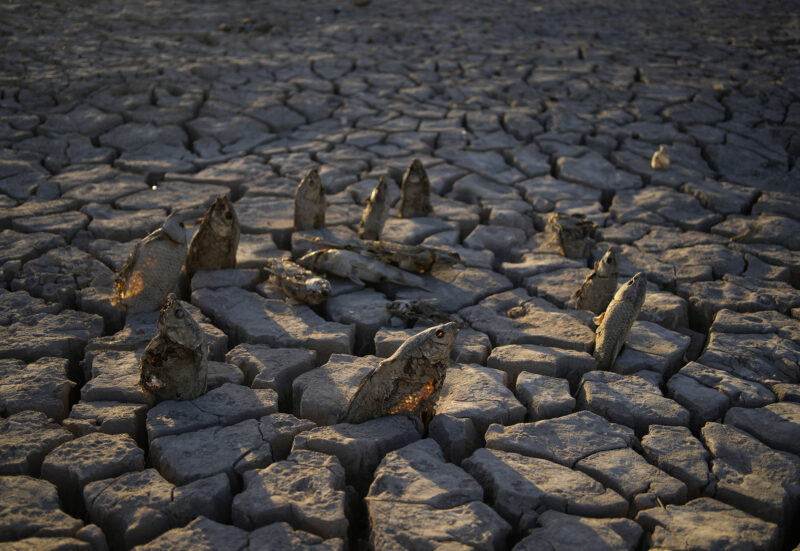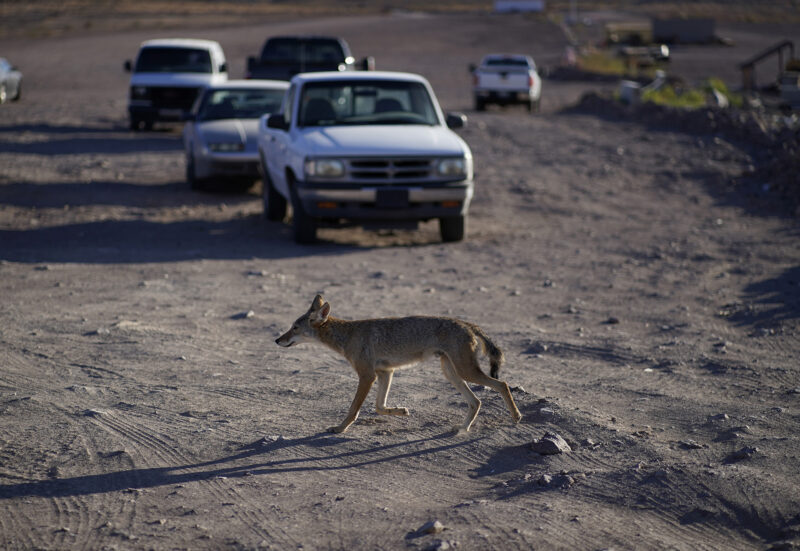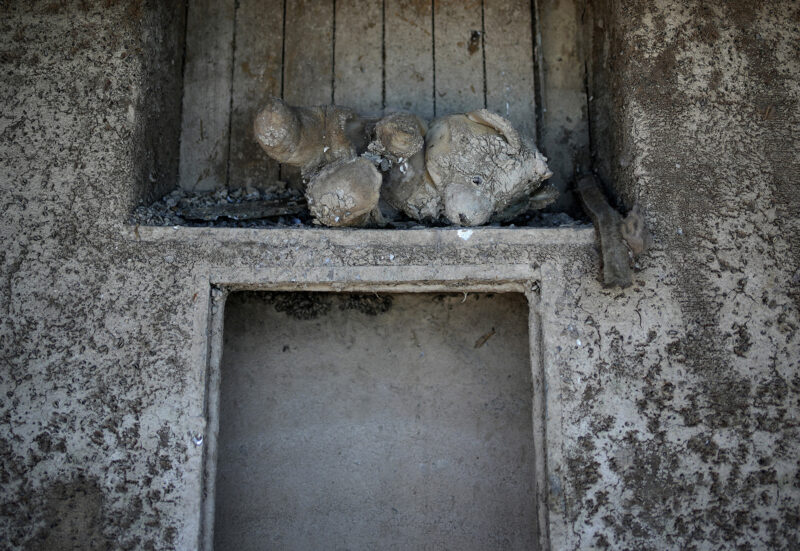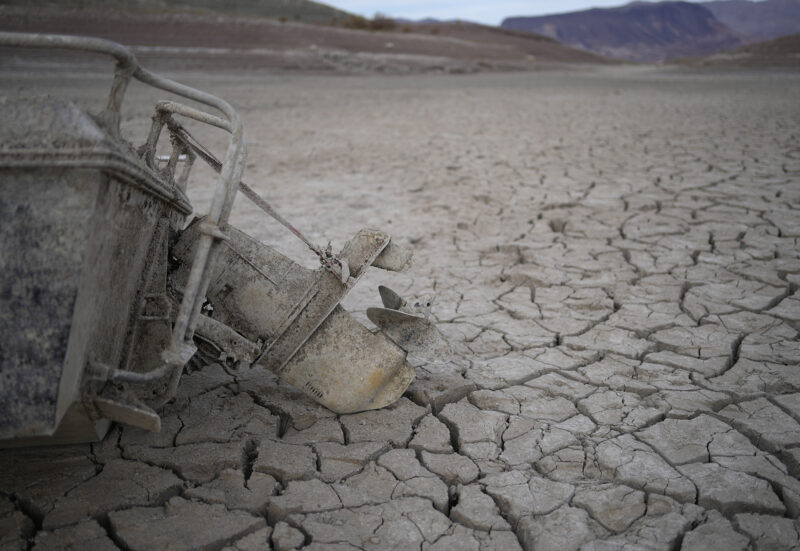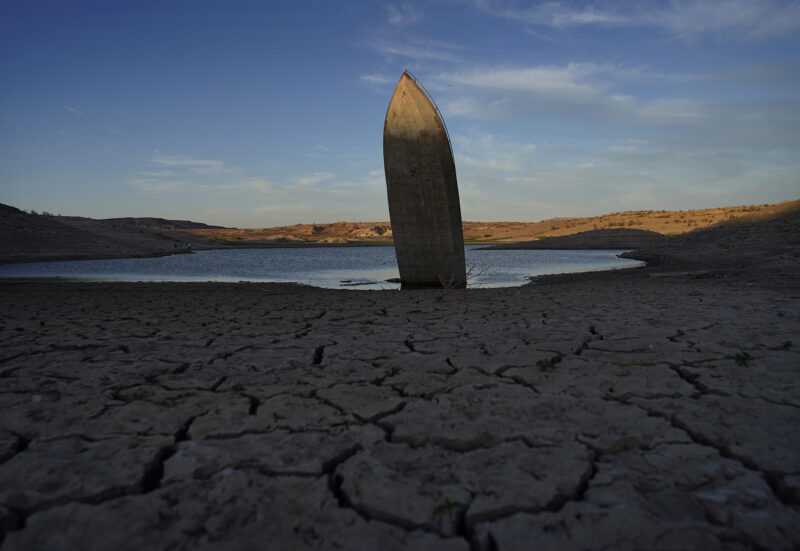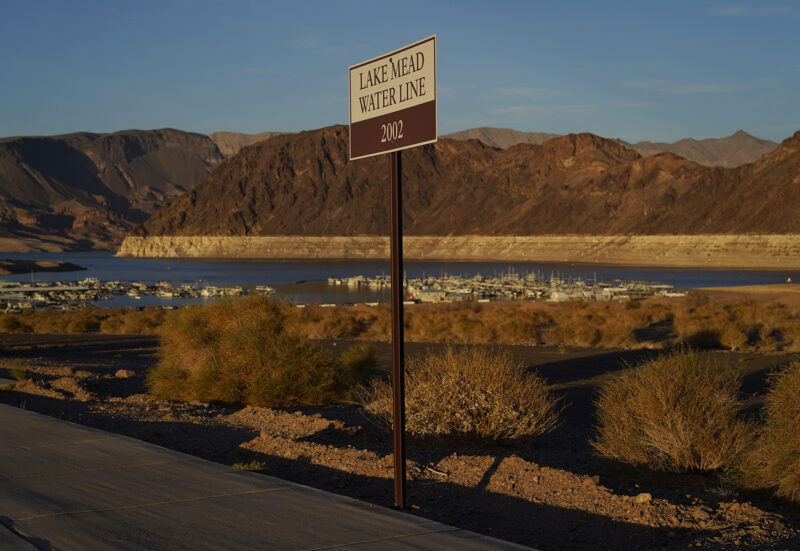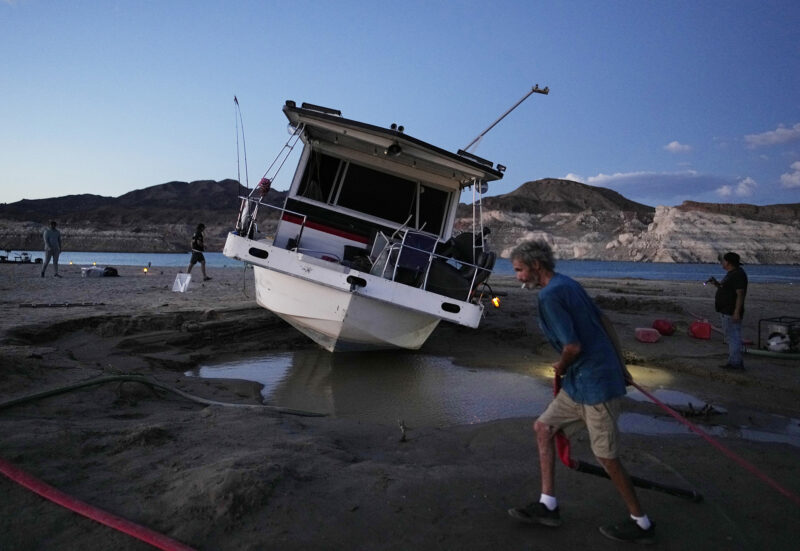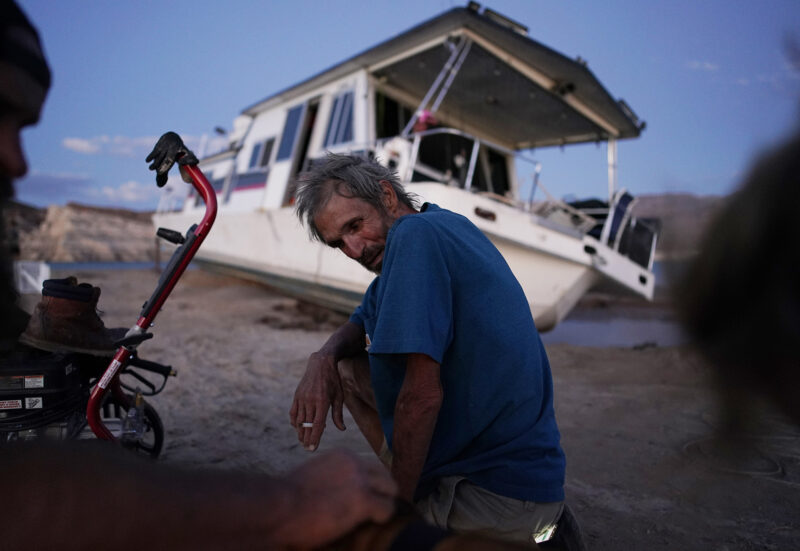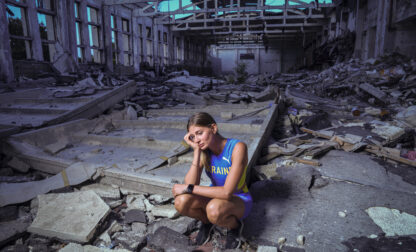Las Vegas-based photographer John Locher has seen no shortage of drought in his years covering a major chunk of the Southwest desert. But this year felt different, particularly when it came to Lake Mead, a popular tourist destination and important source of water, where levels have plummeted.
News organizations across the West have been covering the drought, so Locher wanted to do something that went beyond the obvious images. Over the course of several weeks, he made repeat visits to the sprawling lake, talking to people, exploring different areas and running down visual leads he found posted on YouTube and other social media sites.
Little by little, a theme began to emerge: The receding body of water — a reservoir created by the Hoover Dam — had effectively exposed a graveyard, not just of sunken or stranded boats, but also of wildlife. Dead and desiccated fish, some of which a visitor had arranged in the cracks of the dried-out lakebed, stood as a sort of epitaph. One unfortunate boater spent three weeks on his houseboat going nowhere — he was beached on dry land.
Locher captured all of this, creating a visual essay that conveyed both the life of the people and the death of the lake and its habitat. He worked with interim West news director Stephanie Mullen and climate photo editor Alyssa Goodman on the editing and presentation,and with Los Angeles-based reporter Brian Melley for help drafting the text.
The result was a package used widely and prominently by AP members and customers across the country. Of note,several news outlets built their own presentations with AP’s content. Gizmodo used the work with this headline: “Shocking Photos Show Lake Mead’s Historically Low Water Levels.” The Boston Globe’s gallery bore this headline: “Withering drought turns Lake Mead into a shriveling graveyard.” And the Arizona Republic,which covers Lake Mead robustly as part of its territory, wrote this: “Boat graveyard surfaces at Lake Mead as water levels continue to drop.”
AP PHOTOS: Extremely low levels at Lake Mead amid drought
Stunning photos by @AP’s @locherphoto show effect of mega drought, combined with policy choices and water demands of 40M people in 7 Western states https://t.co/0KtU6lOQ24
— Matthew Daly (@MatthewDalyWDC) July 11, 2022
The Best of the Week judges were moved as well. One judge was “blown away” by the visual impact. Others were impressed by Locher’s use of social media to find unique scenes in a place so close to home,and the many return trips he made to the lake to capture just the right light. One judge summed it up: “This is a great example of how pictures are made and not just found.”
For persistence,creativity and shoe-leather reporting to reveal in striking images the precipitous decline of Lake Mead, Locher earns AP’s Best of the Week — First Winner.
Visit AP.org to request a trial subscription to AP’s video,photo and text services.
For breaking news, visit apnews.com

